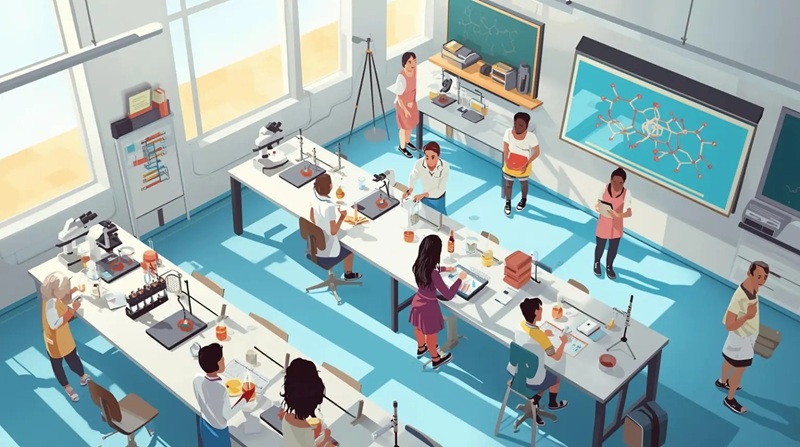Declines in science scores should prompt big change in schools
New approaches are needed to engage students and spark learning

On visits to Chelsea Public Schools, I’ve observed 6-year-olds enthusiastically discussing what materials to use to design a scoop that removes trash from water. They draw on observations from testing paper, foam, and plastic screens. Each group selects the material that worked best. Then, with their teacher, they examine the class data, lining the materials up in rows to make a physical bar graph.
It’s a lesson in math, science, and engineering all at once, and the engagement and learning are off the charts.
New science scores released last week from the Nation’s Report Card, also known as the National Assessment of Educational Progress, or NAEP, indicate we need more of these kinds of innovative approaches to science instruction in K-12 schools across Massachusetts and the country.
Eighth graders nationwide experienced a four-point drop in science scores since 2019, the last time the test was administered. Only about a third of students are working at the NAEP proficient level, which is the goal and means they can do challenging work. Nearly 40 percent aren’t even reaching the basic level, indicating they likely can’t identify characteristics of mammals or the function of a human organ system like the circulatory system.
At the state level, Massachusetts’s MCAS scores also highlight a need for concern—in 2024 only 39 percent of students in grade 8 and 45 percent in grade 5 scored “meeting expectations” or higher on the science, technology, and engineering test.
The slide in science comes on the heels of reading and math declines. Because there’s been such an emphasis on improving achievement in those core subjects, which are at the center of federal school accountability policies, science instruction has been increasingly deemphasized, particularly at the elementary level.
But the Chelsea example shows things don’t have to be this way. By integrating subjects, we can add more science and engineering into the curriculum and help students improve academically across a range of critical subjects.
The scores aren’t the only signs of trouble in the latest results from the Nation’s Report Card. Accompanying survey data show student enjoyment in science class is down, as are opportunities for hands-on, inquiry-based learning. Students report spending less time in school, for example, designing experiments to answer research questions or using evidence from experiments to explain a scientific phenomenon.
In other words, textbooks, worksheets, and lectures are probably how most kids are learning science. While there’s a place for these, they shouldn’t dominate science instruction because the approach is too passive and fails to foster student engagement or build skills like critical thinking and collaboration.
Schools sometimes have trouble finding research-based, high-quality, hands-on science lessons and instructional materials. For help, they can look to STEM organizations. The Museum of Science, where I lead STEM learning, offers free pK-8 STEM curricula. Other organizations that create science-based instructional materials include OpenSciEd, the Smithsonian Science Education Center, and the Lawrence Hall of Science.
The decline in NAEP science scores, like in other areas, was steepest for low-performing or academically struggling students, who can especially benefit from hands-on approaches that allow them to demonstrate their learning in multiple ways. In Chelsea, we’ve tried to improve access to STEM lessons in the school day as well as through afterschool, summer school, and family programs.
Students also thrive when they connect their coursework to the world around them. Science and engineering are ideal for this kind of interdisciplinary, real-world learning. For example, as second graders learn about plants, they can nurture them in a classroom container or school garden and explore their favorite fruits and vegetables with friends and family.
Such a unit weaves together science topics like life cycles of plants and pollinators, math themes like measurement, and engineering practices like designing hand pollinators. Importantly, students enjoy learning this way—when Chelsea piloted this approach, students, parents, and educators all wanted more of it.
Isn’t that what we want for all our kids?
STEM fields are a vital and growing part of the economy. But whatever path students choose in life, they’ll need a solid K-12 foundation in science.

It’s time to acknowledge that the way Massachusetts and other states have largely been teaching science isn’t getting the job done and look for better options and bright spots. Let’s get creative, give kids the chance to learn STEM and other subjects on a deeper level, and maybe even let them have some fun along the way.
Christine Cunningham is senior vice president of STEM learning at Boston’s Museum of Science and a member of the National Assessment Governing Board, which sets policy for the Nation’s Report Card.
CommonWealth Voices is sponsored by The Boston Foundation
